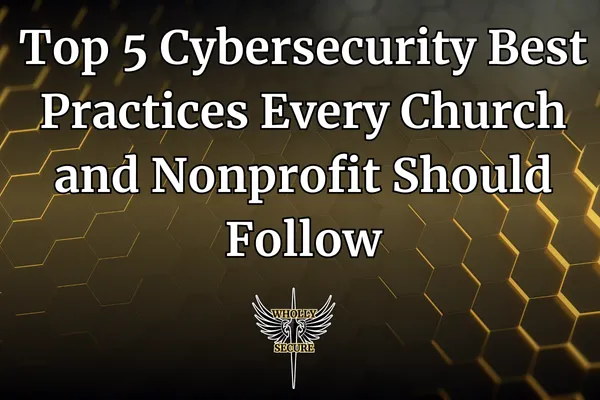
Top 5 Cybersecurity Best Practices Every Church and Nonprofit Should Follow
Top 5 Cybersecurity Best Practices Every Church and Nonprofit Should Follow
Cybersecurity threats are on the rise, and churches and nonprofits are not exempt. You do not need to have a large team or a massive budget to make meaningful progress. The most effective protections often come from foundational best practices that any organization can begin applying.
This article outlines five essential actions that every faith-based organization should consider in order to strengthen its cybersecurity posture.
1. Conduct a Risk Assessment
The first step in improving security is understanding where your vulnerabilities are. A cybersecurity risk assessment helps identify weaknesses in your systems, policies, and staff awareness. It also provides a prioritized view of where to focus your efforts.
What to do: Engage a qualified cybersecurity provider like Wholly Secure, who can perform an assessment tailored to your organization’s structure, size, and mission.
2. Strengthen Password and Access Controls
One of the most common entry points for cyberattacks is a weak or reused password. Churches and nonprofits often rely on shared logins or outdated access policies, which can increase exposure to breaches.
What to do: Require staff and volunteers to use unique, complex passwords. Implement a password manager and enable multi-factor authentication where possible.
3. Provide Regular Cybersecurity Training
Even with strong technology in place, human error remains a leading cause of data breaches. Untrained staff and volunteers may fall for phishing attempts, mishandle sensitive data, or unintentionally introduce risks.
What to do: Offer simple, recurring training sessions that cover topics such as safe email practices, phishing awareness, secure file sharing, and password safety.
4. Develop an Incident Response Plan
If your church or nonprofit experiences a cyberattack, a well-prepared response can significantly reduce damage. Many organizations either do not have a documented plan or have one that is outdated and unused.
What to do: Create a written plan that includes response steps, contact responsibilities, communication protocols, and recovery procedures. Review and update the plan regularly, and make sure leadership knows how to access it.
5. Keep Systems and Software Updated
Hackers often exploit known vulnerabilities in outdated software. Churches and nonprofits using legacy platforms or skipping updates are at increased risk.
What to do: Establish a routine process for updating all software, operating systems, and plugins. If you rely on outside vendors, confirm that they follow current security patching practices.
Final Word
Cybersecurity is not about achieving perfection. It is about taking intentional steps to reduce your exposure to risk and demonstrate responsible stewardship of the information entrusted to your organization.
You do not need to start from scratch or solve everything at once. Begin with one or two of these best practices and build from there.
If you are not sure where to start, we can help. A simple conversation can bring clarity.